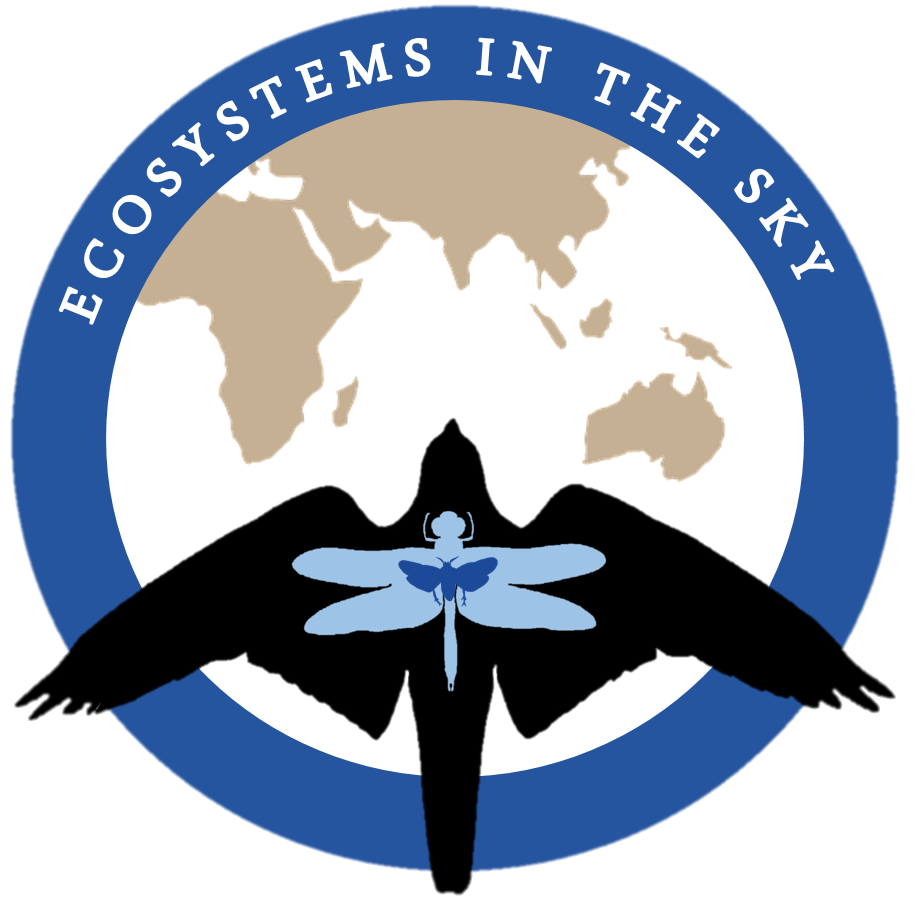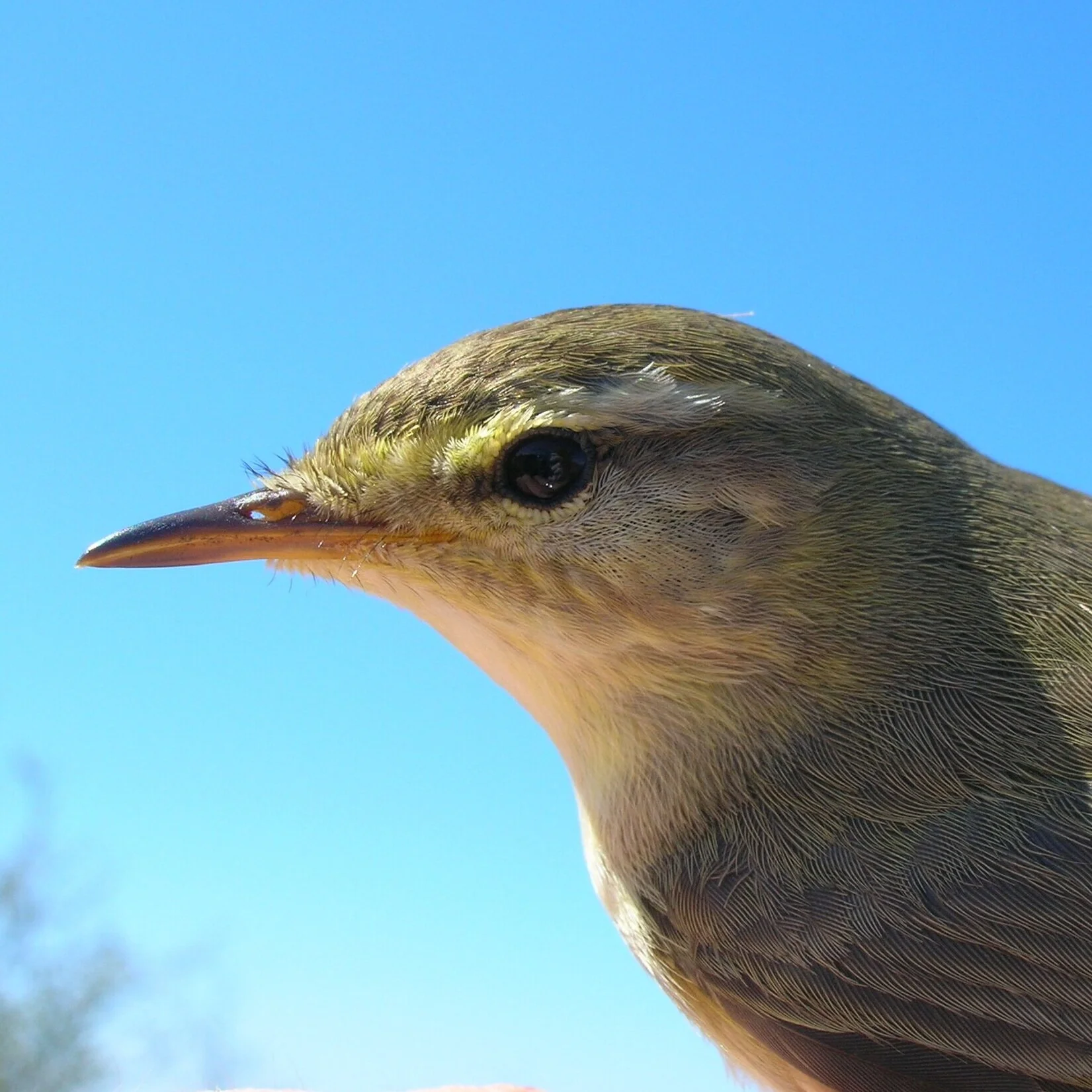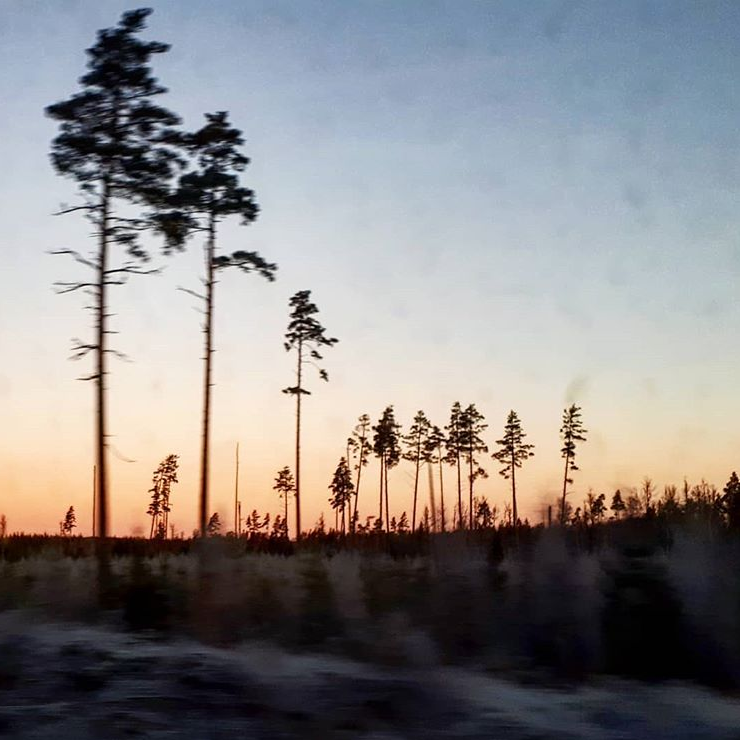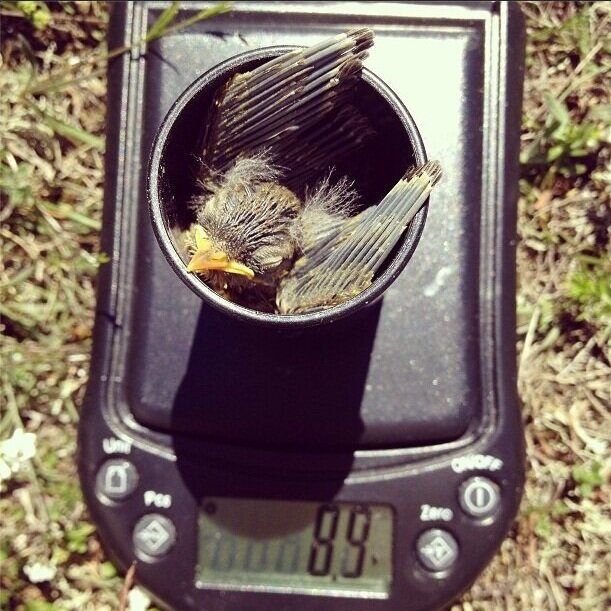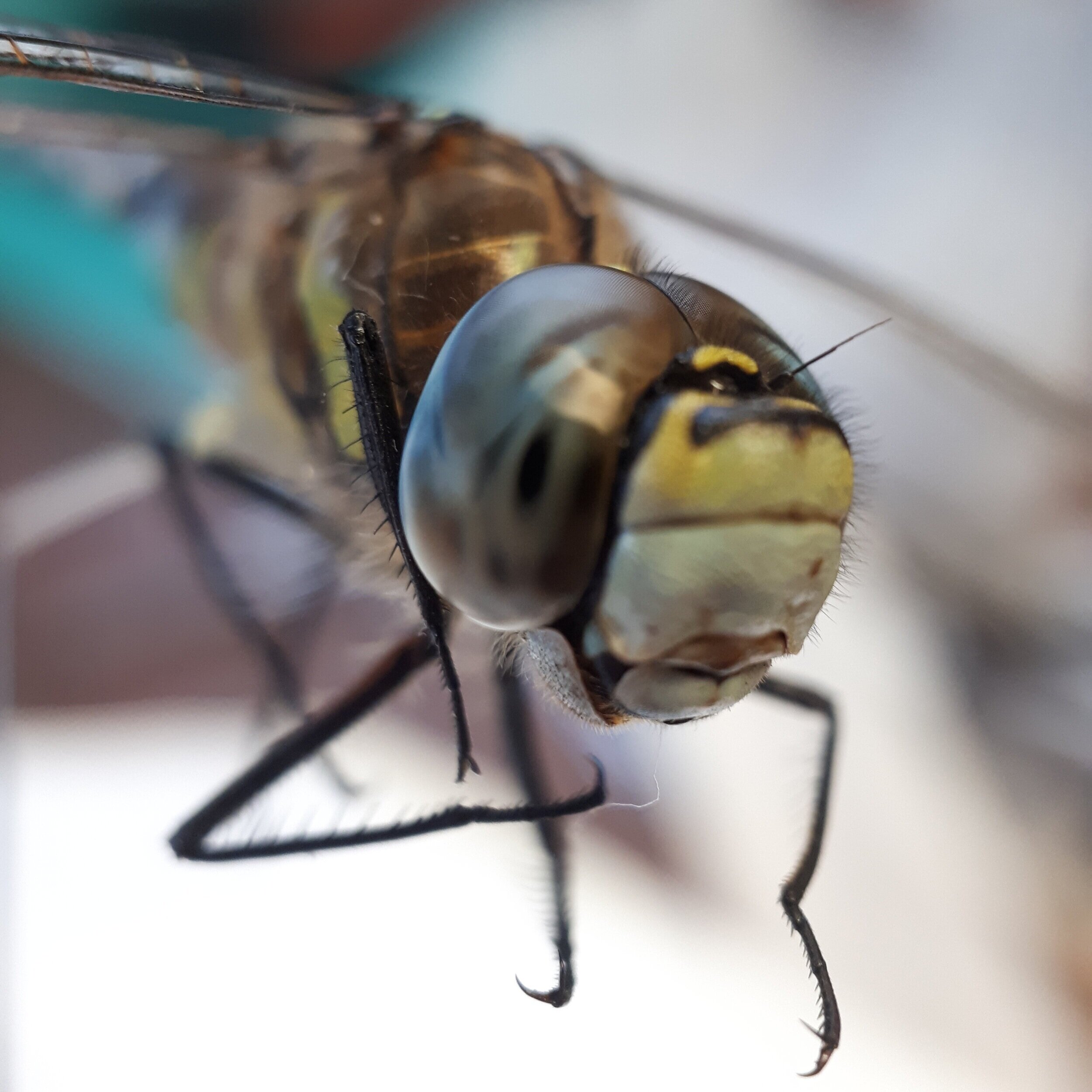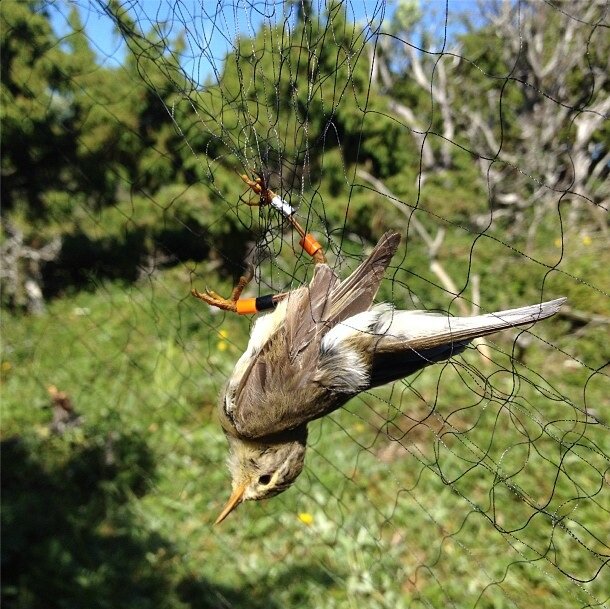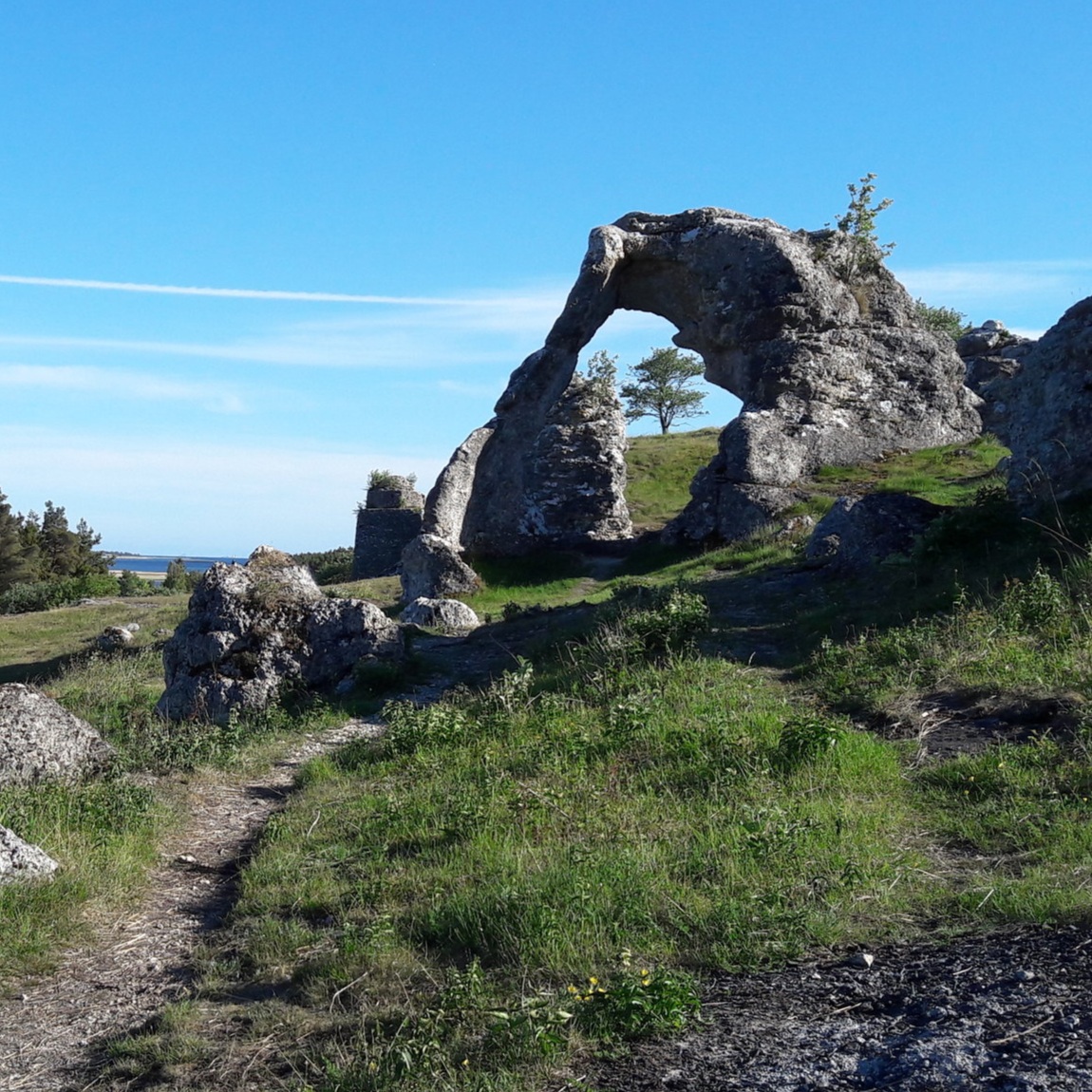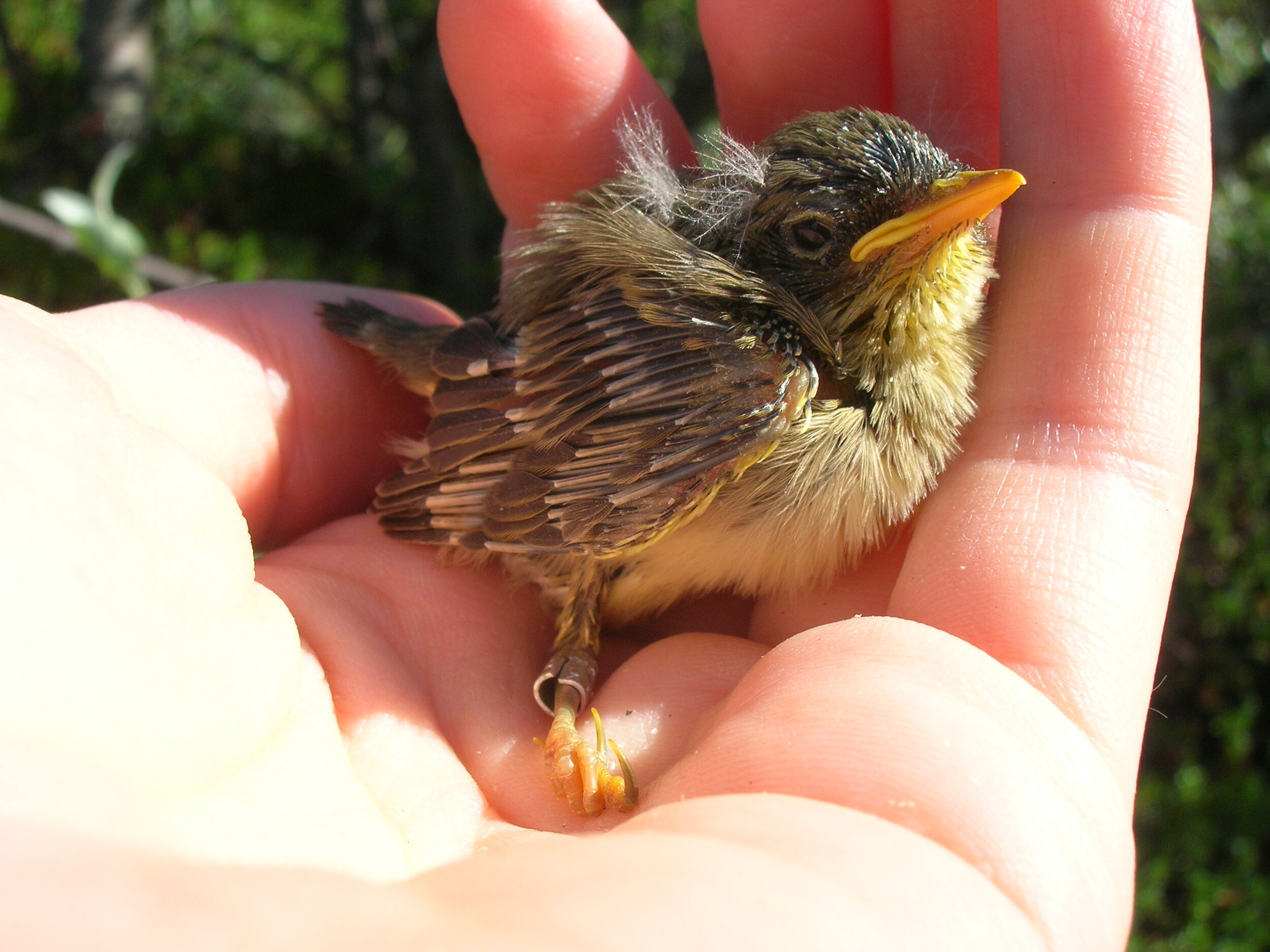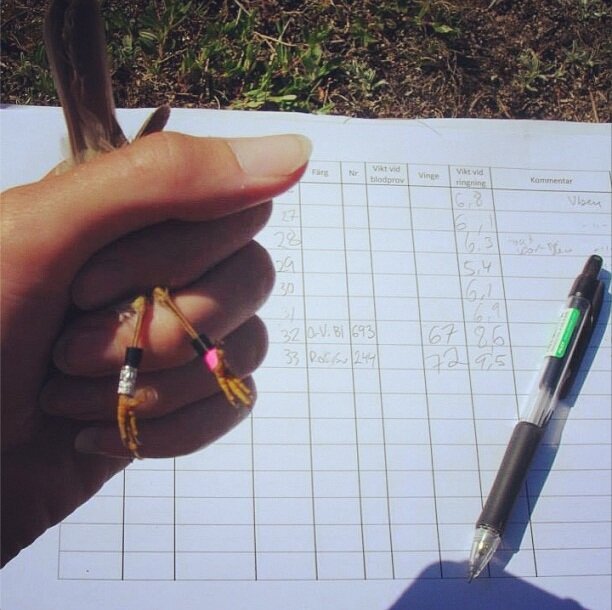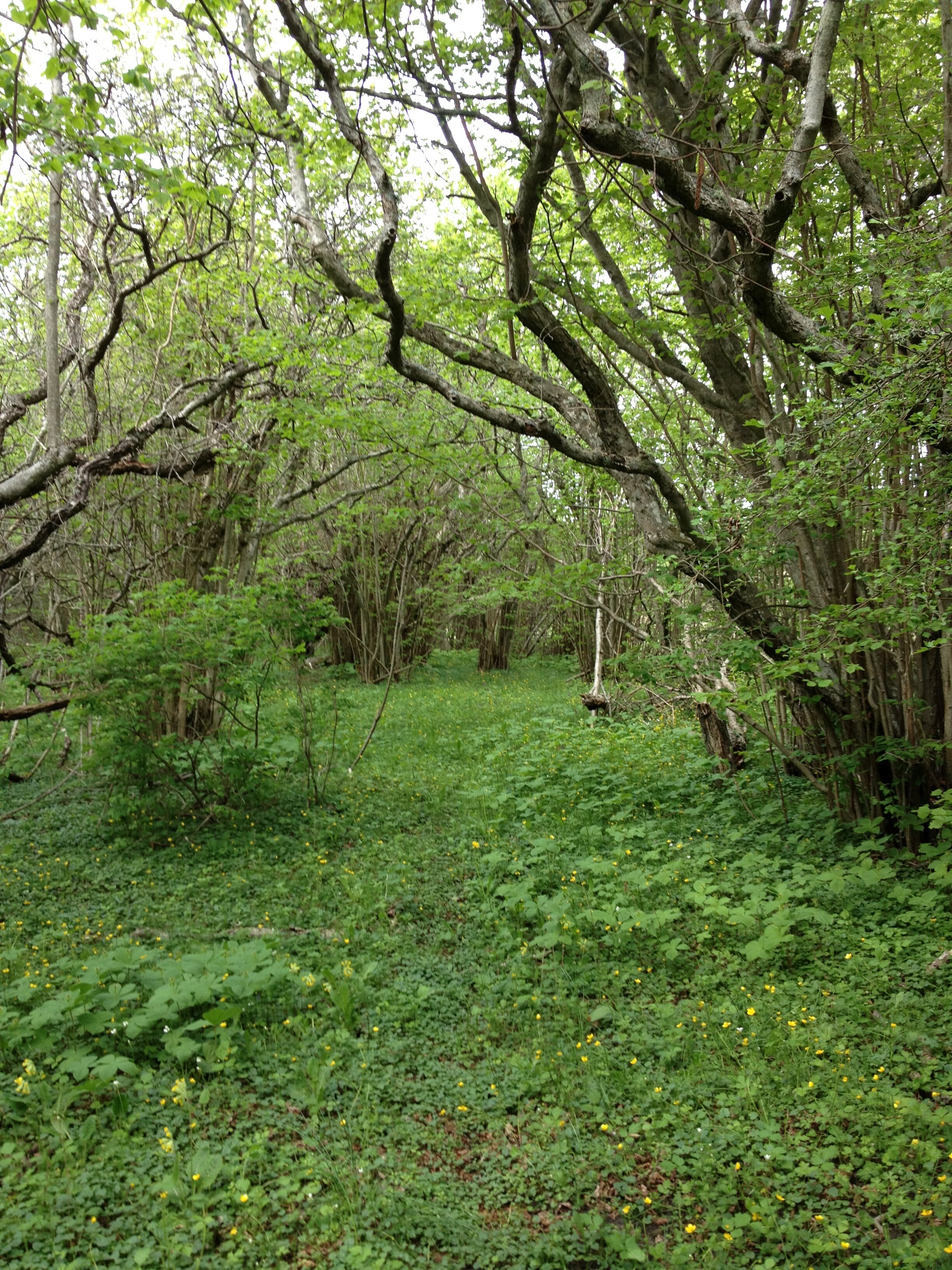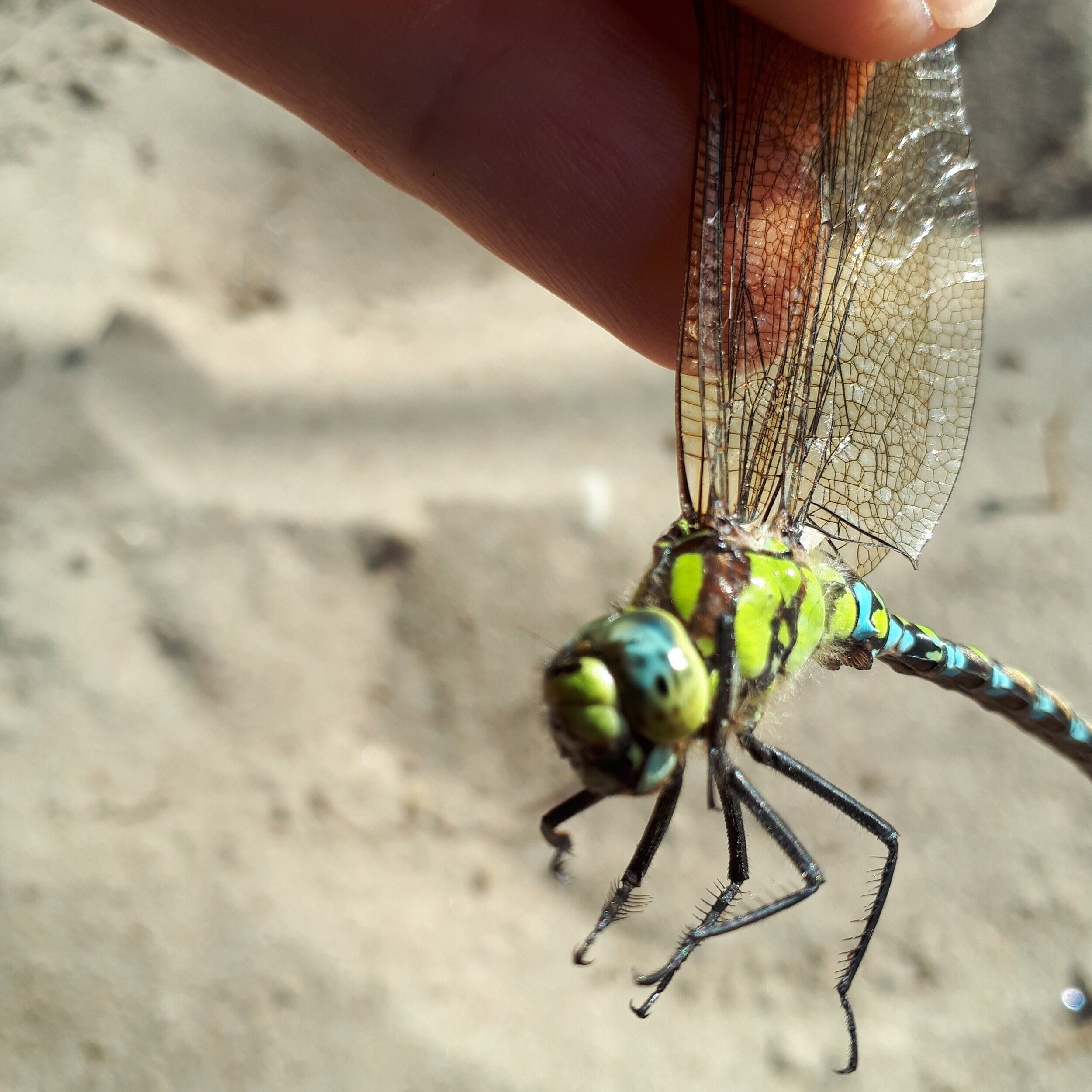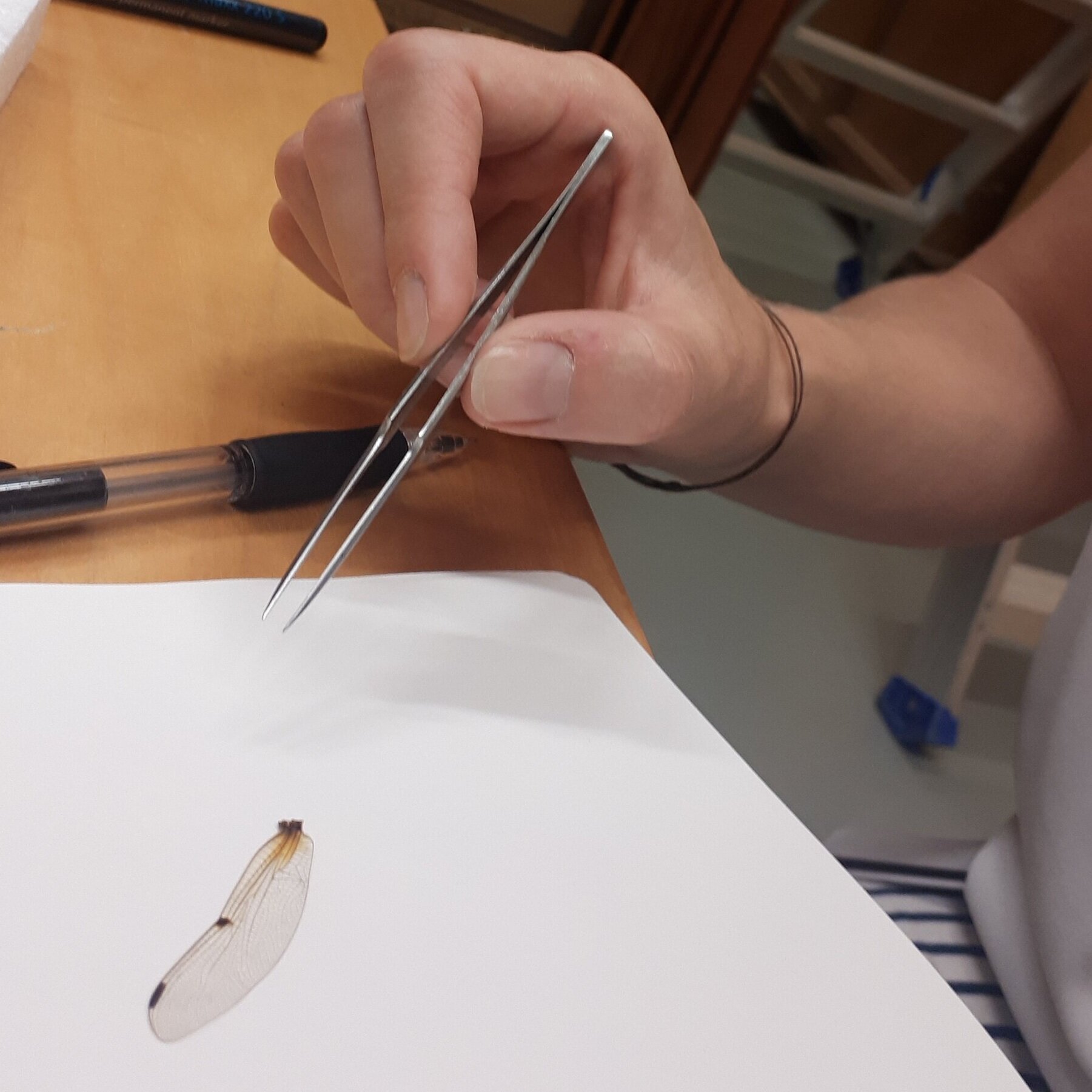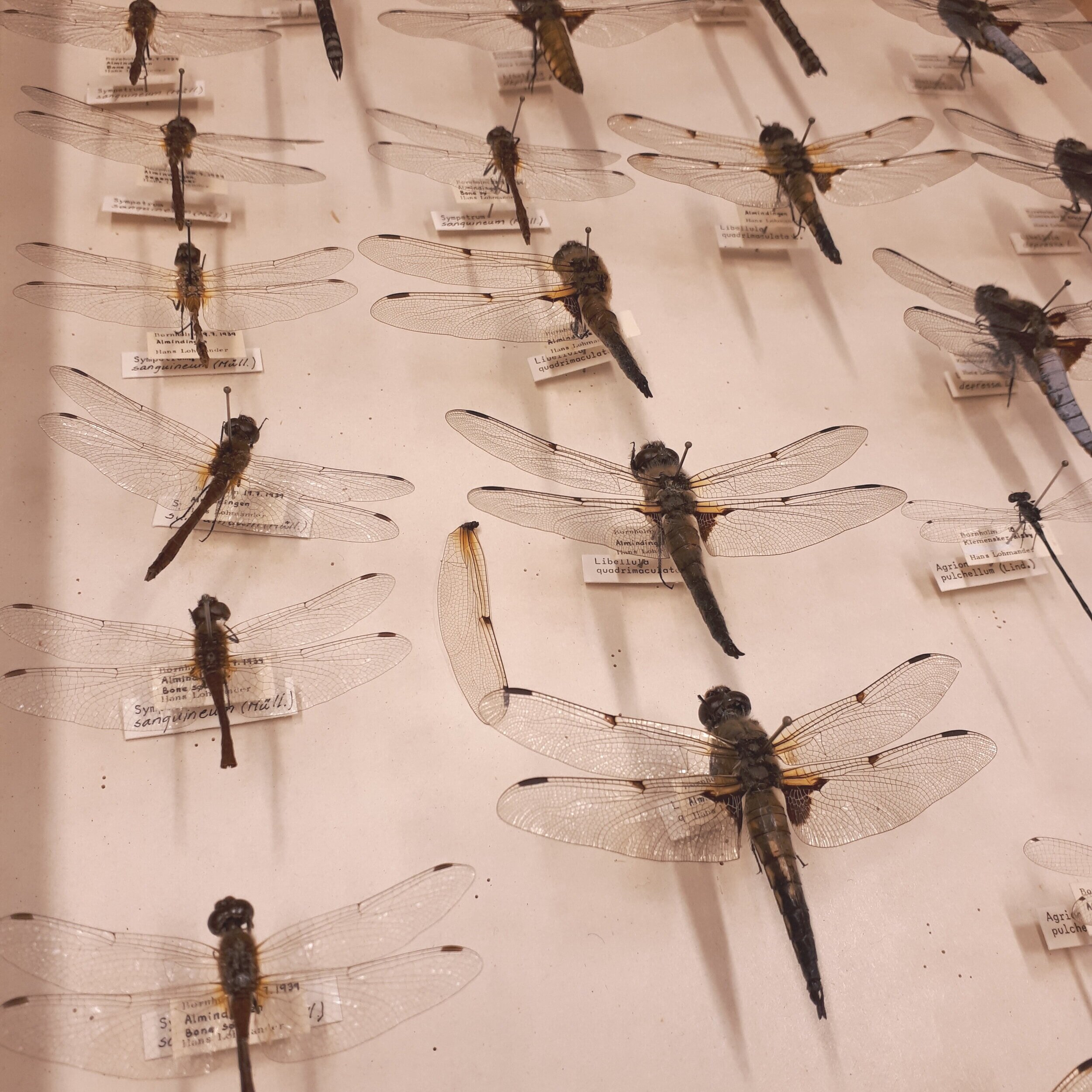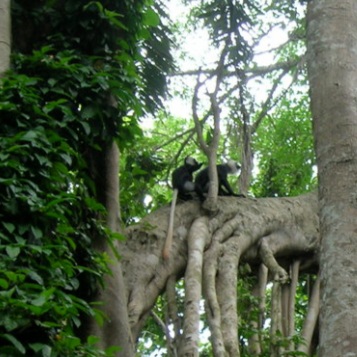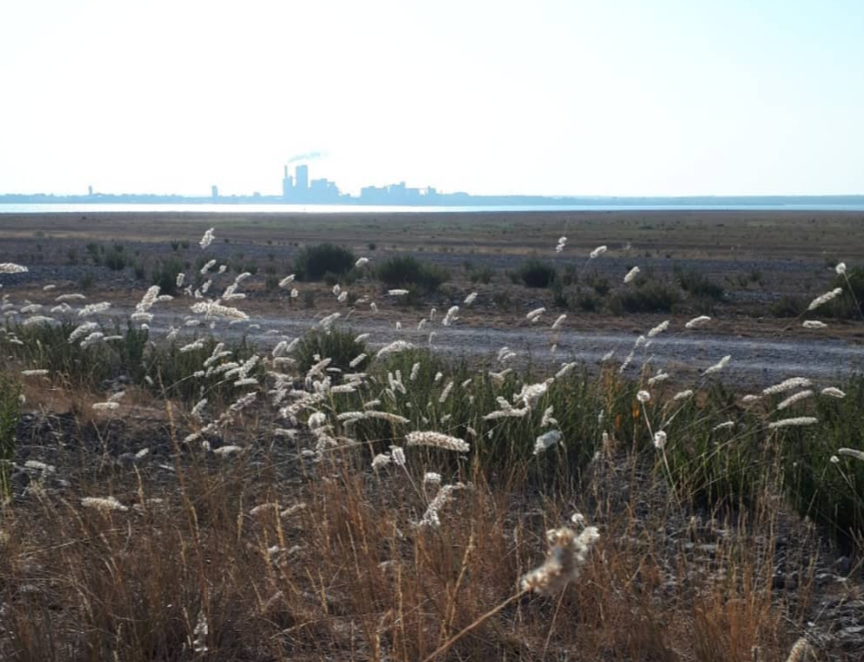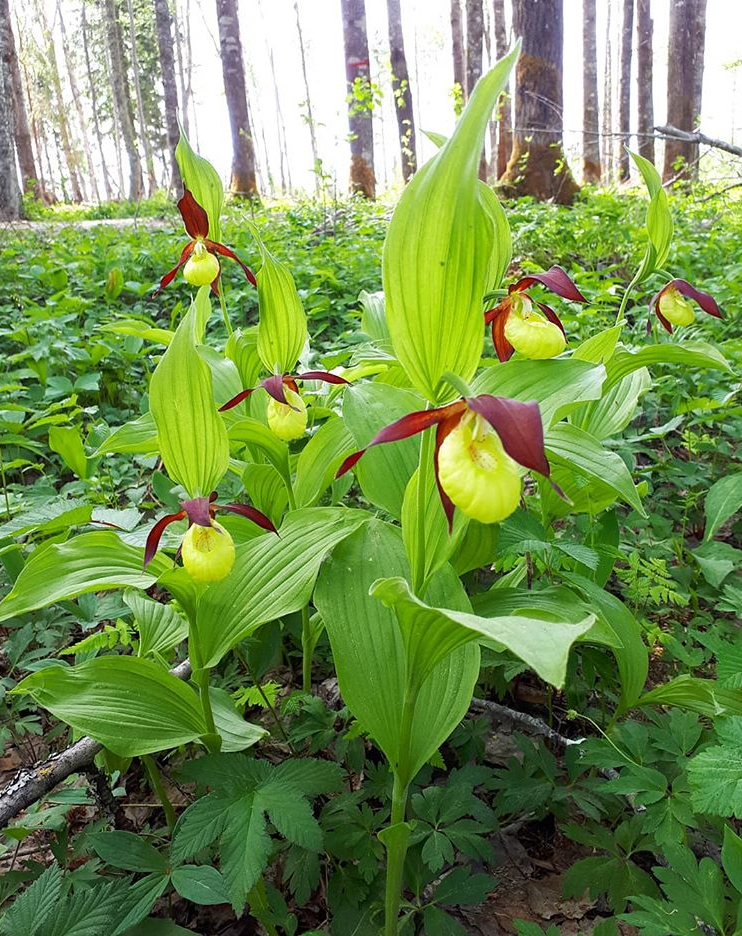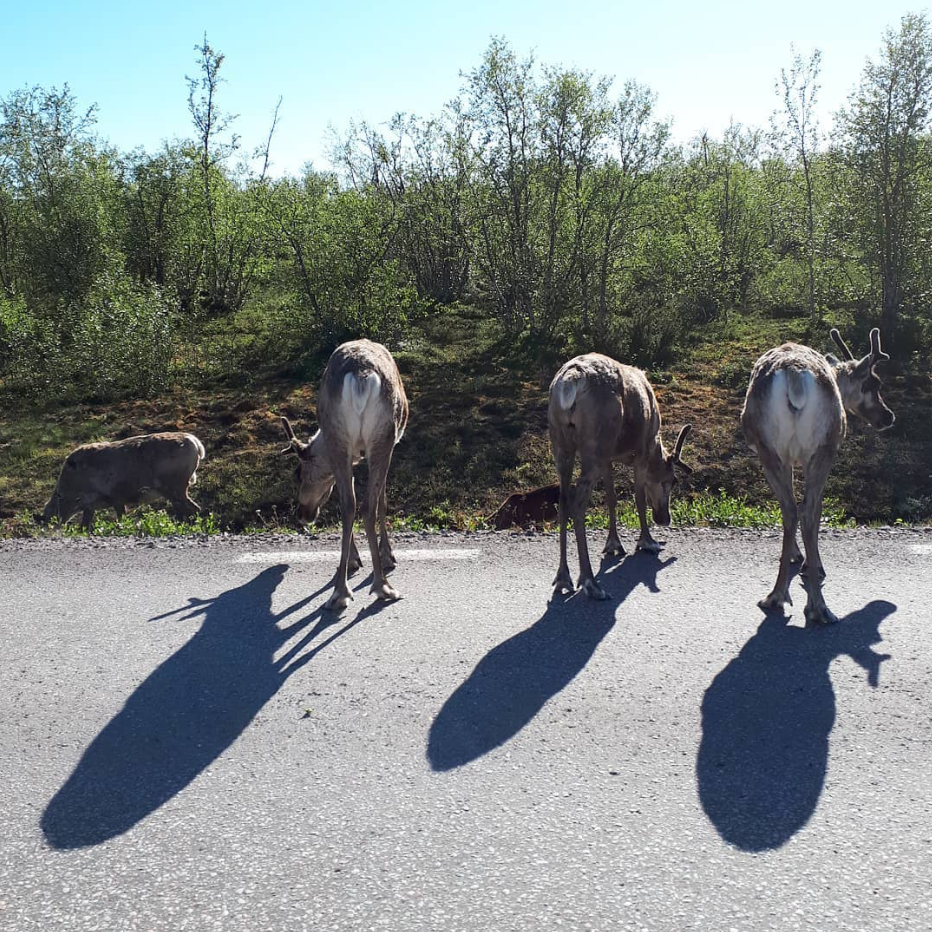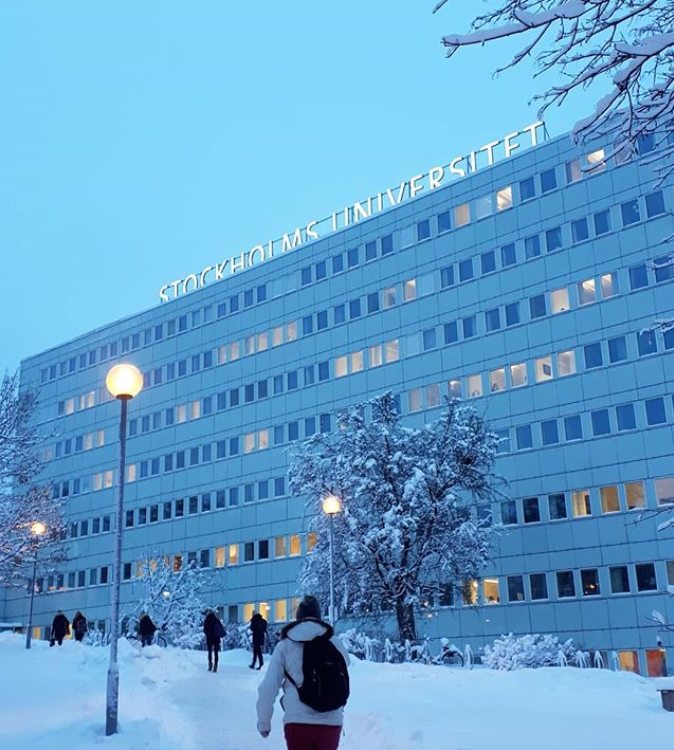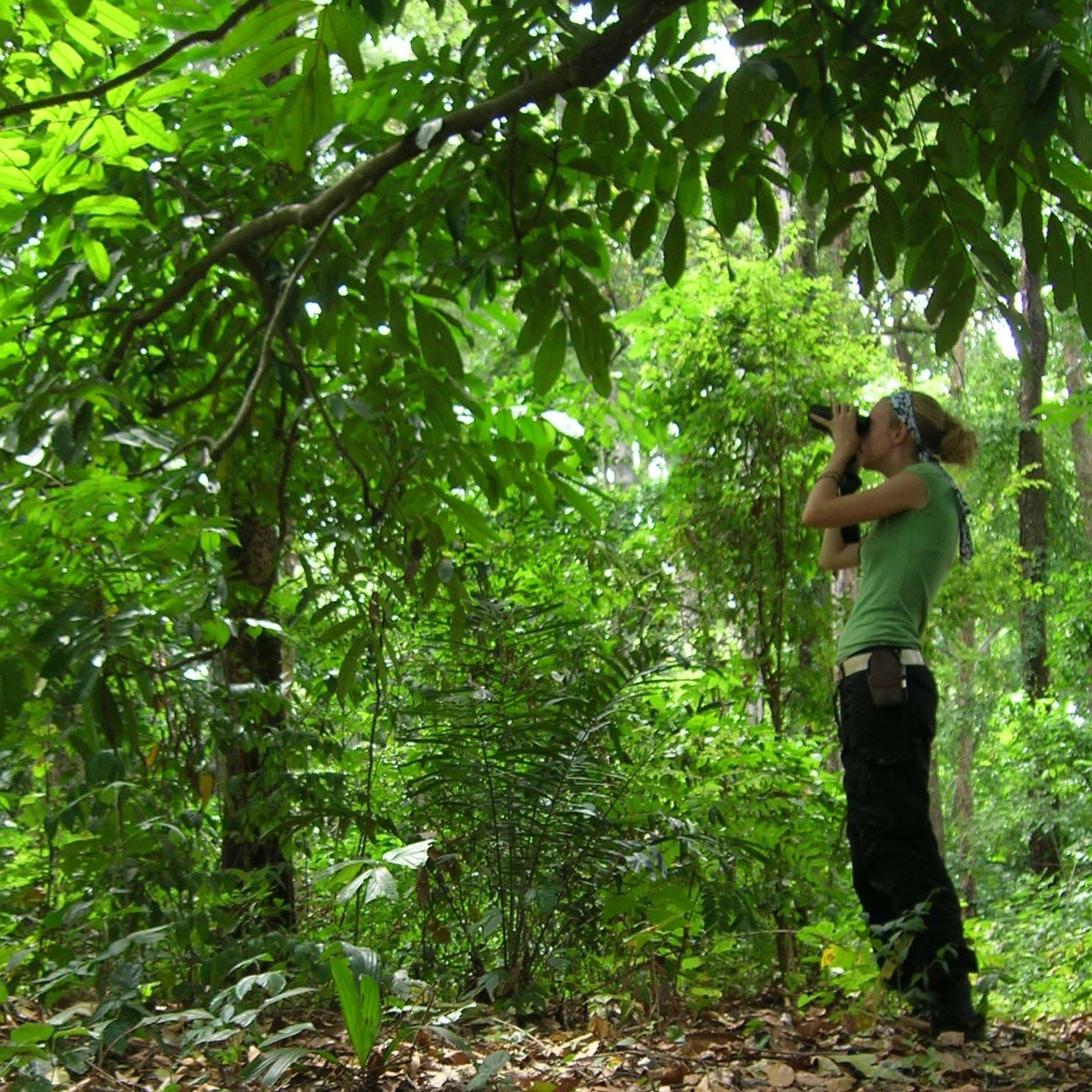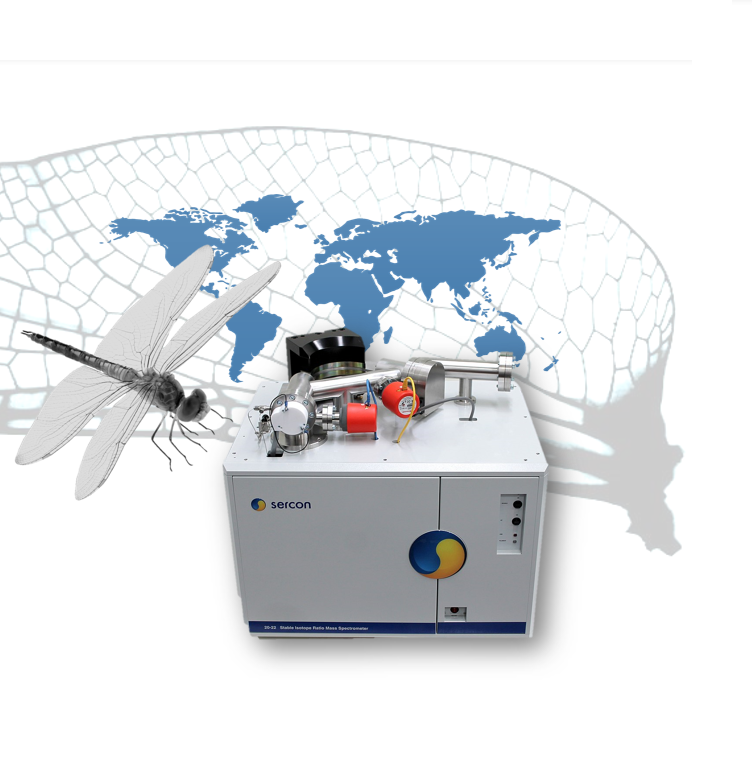My research interests lie in Behavioural Ecology, where I have studied social interactions in gregarious mammals, bird migration and effects of environmental change and climate change on phenology in birds.
Currently, I am researching ecosystems in the sky, focusing on the migratory interactions, aeroecology and migratory behaviour of birds and insects. Along side this main project, I am also investigating the large scale migration of dragonflies in Europe.
Projects
Ecosystems in the sky
The aim of this project is to map the structure, intensity and composition of the Indian Ocean Flyway. This is the migratory system of micro-insects, insects and insectivorous birds that periodically swarm the sky above the Indian Ocean, linking Asia with Africa and hosting two of the greatest migratory champions of the world: the small globe skimmer dragonfly, and the Amur falcon. The main tool for the investigation of the Indian Ocean Flyway is the Birdscanner, a monitoring machine developed by the Swiss Ornithological Institute that can track flying targets as small as dragonflies and birds flying as high up as above 1000 meter.
The project would not be possible without Prof Jason Chapman and Dr Lucy Hawkes at University of Exeter and Prof Susanne Åkesson at Lund Univeristy, and collaborators Suresh Kumar at The Wildlife Institute of India and Martin Wikelski at the Max Planck Institute of Animal Behaviour.
European Dragonfly Migratory Isoscape
The aim of this project is to map out an isoscape for migratory dragonflies in Europe, using stable isotopes of samples from museum specimens and live caught dragonflies. So far, samples have been collected in Lativa and the UK, and participating natural history museums include those in Gothenburg, London and Stockholm.
I am very grateful to curators Dr Ben Price, Dr Charlotte Jonsson and Niklas Apelqvist for their time and support when I visited their museums and dragonfly collections. And I thank Jaimie Barnes, Ilya MacLean, Marc Heath, Dougy Wright, Carla Hill, David Clarke, John Ward, Charles Gauci, Chris Kaiser-Banbury, Nancy Bunbury and Sandwich Bay Bird Observatory Trust for their help.
You can help out on this project: send in dragonfly wings and specimen that you find or have! Click HERE to get more information
Blog posts realted to this project:
European Monitoring Scheme For Migratory Dragonflies
The aim of this project is to initiate a pan-European scheme for monitoring migratory dragonflies, linking ornithological stations and observatories around Europe that regularly observe and catch migrating dragonflies.
The project is a joint effort together with The Insect Migration and Ecology Lab, at the Max Planck Institute of Animal Behaviour
Finished projects
Learn more about previous research that I have conducted on climate change effects on willow warblers, land use-change effects on migratory birds, and about my work in conservation, managing and monitoring protected areas and species
Research links
Publications
New publications
Hayward A, Lohse K, Vila R, Laetsch DR, Hedlund JSU, Wellcome Sanger Institute Tree of Life programme, Wellcome Sanger Institute Scientific Operations: DNA Pipelines collective, Tree of Life Core Informatics collective, Darwin Tree of Life Consortium (2023) “The genome sequence of the Brown Argus, Aricia agestis”. Welcome Open Research 8:336. https://wellcomeopenresearch.org/articles/8-336
Jaitly R, Ehrnsten E, Hedlund J, Cant M, Lehmann P, Hayward A (2022). The evolution of predator avoidance in cephalopods: A case of brain over brawn? Frontiers in Marince Science. 9:909192
Johanna Hedlund, Thord Fransson, Cecilia Kullberg, Jan-Olov Persson, Sven Jakobsson (2022) Increase in protandry over time in a long-distance migratory bird. Ecology and Evolution 12:7 e9037
PEER-REVIEWED JOURNALS
Ruth H. Thurstan,Kimberley J. Hockings, Johanna S. U. Hedlund,Elena Bersacola,Claire Collins,Regan Early,Yunsiska Ermiasi,Frauke Fleischer-Dogley,Gabriella Gilkes,Mark E. Harrison,Muhammad Ali Imron,Christopher N. Kaiser-Bunbury,Daniel Refly Katoppo,Cheryl Marriott,Marie-May Muzungaile,Ana Nuno,Aissa Regalla de Barros,Frank van Veen,Isuru Wijesundara,Didier Dogley,Nancy Bunbury, (2021) Envisioning a resilient future for biodiversity conservation in the wake of the COVID-19 pandemic. People and Nature, 00:1-24, DOI: 10.1002/pan3.10262
Hedlund J and Lv H, Lehmann P, Hu G, Anderson RC, Chapman JW (2021) Unraveling the World’s Longest Non-stop Migration: The Indian Ocean Crossing of the Globe Skimmer Dragonfly. Frontiers in Ecology and Evolution, 9: 698128
Gao B, Hedlund J, Reynolds DR, Zhai B, Hu G, Chapman JW (2020) The ‘migratory connectivity’ concept and its applicability to insect migrants. Movement Ecology
Hedlund J, Ehrnsten E, Hayward C, Lehmann P, Hayward A (2020) New records of the Paleotropical migrant Hemianax ephippiger in the Caribbean and a review of its status in the Neotropics. International journal of Odonatology. 23:4, 315-325, DOI: 10.1080/13887890.2020.1787237
Hedlund J, Sjösten F, Sokolovskis K, Jakobsson S (2017) Point of no return – absence of returning birds in the otherwise philopatric willow warbler (Phylloscopus trochilus). Journal of Avian Biology 48(3):399-406. doi: 10.1111/jav.00973
Elmhagen B, Destouni G, Angerbjörn A, Borgström S, Boyd E, Cousins SAO, Dalén L, Ehrlén J, Ermold M, Hambäck PA, Hedlund J, Hylander K, Jaramillo F, Lagerholm VK, Lyon SW, Moor H, Nykvist B, Pasanen-Mortensen M, Plue J, Prieto C, van der Velde Y and Lindborg R (2015) Interacting effects of change in climate, human population, land-use, and water use on biodiversity and ecosystem services. Ecology and Society 20(1): 23. doi: http://dx.doi.org/10.5751/ES-07145-200123
Hedlund J, Jakobsson S, Kullberg C, Fransson T (2015) Long-term phenological shifts and intra-specific differences in migratory change in the willow warbler Phylloscopus trochilus. Journal of Avian Biology 46: 97–106. doi: 10.1111/jav.00484
Kullberg C, Fransson T, Hedlund J, Jonzén N, Langvall O, Nilsson J, Bolmgren K (2015) Change in spring arrival of migratory birds under an era of climate change, Swedish data from the last 140 years. Ambio 44(suppl.1):69-77. doi: 10.1007/s13280-014-0600-1
Lättman H, Brand A, Hedlund J, Krikorev M, Olsson N, Robeck A, Rönnmark F and Mattsson J-E (2009) Generation time estimated to be 25–30 years in Cliostomum corrugatum (Ach.) Fr. The Lichenologist 41 (5): 557-559. https://doi.org/10.1017/S0024282909990259
POPULAR SCIENCE JOURNALS
Hedlund J (2022) Trollsländemigration: outforskade rekord (in Swedish). Mosaik, issue 1:22 page 30, the magazine of the Swedish Dragonfly Society
Hedlund J (2016) Klimatförändringen och den nordliga lövsångaren. Fåglar I Norrbotten 2016:2, Norrbottens Ornitologiska Förenings Tidskrift
PEER-REVIEWED CONFERENCE ABSTRACTS
Hedlund J (2019) Ecosystem in the sky – species interaction during migration over the Indian Ocean. The 2019 International Congress of Odonatology
Hedlund J, Sjösten F, Sokolovskis K, Jakobsson S (2016) Point of no return -zero philopatry in an otherwise philopatric bird. The 16th congress of the International Society for Behavioral Ecology.
Hedlund J, Jakobsson S, Kullberg C, Fransson T (2014) Latitudinal differences in long-term migratory change in the willow warbler (Phylloscopus trochilus). The 26th International Congress of Ornithology
Hedlund J, Jakobsson S, Kullberg C, Fransson T (2013) Long-term life-history responses to climate change in the willow warbler (Phylloscopus trochilus). The 14th Congress of the European Society for Evolutionary Biology.
LITOGRAPHS
Hedlund J (2015) Climate change effects on migratory birds and on the ecology and behaviour of the willow warbler (Phylloscopus trochilus). Doctoral thesis, Stockholm University.
Hedlund J (2014) Effects of climate change on phenology in the willow warbler (Phylloscopus trochilus). Licentiate thesis, Stockholm University.
Hedlund J (2009) Living with males: benefits and costs to females of resident males in Colobus vellerosus. Master thesis, Södertörn University College.
Reports and prints
Guide to biodiversity management for forest owners. Special appendix published in SkogsEko nr 4 2018
Conservation management plans for Natura 2000 sites of Gotland 2016
Ex situ conservation of wild species in the European Union. Report 2010-2011, for the European Commission (DG ENV). BIO Intelligence Service; The European Association of Zoos and Aquaria (EAZA); The Conservation Breeding Specialist Group of the IUCN (IUCN-CBSG); The Royal Botanical Gardens in Kew (RBG, Kew, UK).
Biodiversity protection in synergy with Natura 2000 - A case study analysis. Report 2009-2010, for the European Commission (DG ENV). BIO Intelligence Service
